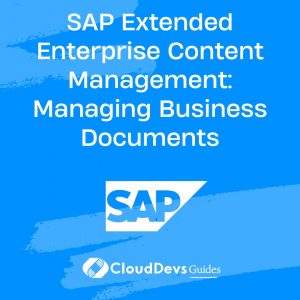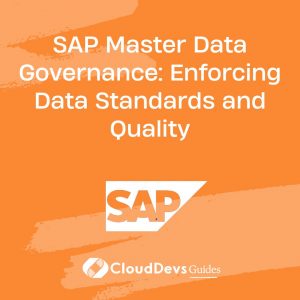SAP Cloud Platform Integration: Connecting Applications and Data
In today’s interconnected digital landscape, the ability to seamlessly connect applications and data is crucial for businesses striving to stay competitive and agile. With the rapid proliferation of cloud-based solutions and the increasing complexity of enterprise IT architectures, organizations are turning to robust integration platforms to streamline their processes and drive innovation. One such platform that has been gaining significant traction is the SAP Cloud Platform Integration (CPI).
1. Understanding SAP Cloud Platform Integration
SAP Cloud Platform Integration is a comprehensive integration platform as a service (iPaaS) solution offered by SAP. It empowers organizations to connect cloud-based and on-premises applications, data sources, and business processes to enable seamless information flow across the enterprise. Whether it’s integrating SAP applications such as SAP S/4HANA, SAP SuccessFactors, or SAP Ariba, or connecting to third-party systems and services, CPI provides a flexible and scalable framework for achieving integration objectives.
2. Key Features and Capabilities
2.1. Pre-packaged Integration Content:
CPI offers a rich library of pre-built integration content, including pre-configured integration flows, adapters, and connectors for popular enterprise applications and services. This accelerates the implementation process and reduces development effort, allowing organizations to quickly realize the benefits of integration.
2.2. Unified Integration Platform:
With CPI, organizations can manage all their integration needs from a single, unified platform. This includes designing, deploying, monitoring, and managing integrations across various systems and environments, providing end-to-end visibility and control over integration processes.
2.3. Flexibility and Extensibility:
CPI supports a range of integration patterns, protocols, and data formats, allowing organizations to adapt to diverse integration scenarios. Additionally, it offers extensibility options through custom adapters, APIs, and integration add-ons, enabling organizations to tailor integrations to their specific requirements.
2.4. Security and Compliance:
Security is a top priority in enterprise integration, and CPI provides robust security features to safeguard sensitive data and ensure compliance with regulatory requirements. This includes data encryption, authentication mechanisms, role-based access control, and audit trails to track integration activities.
3. Real-World Examples
3.1. Integration of SAP S/4HANA with Salesforce
A manufacturing company leveraged SAP Cloud Platform Integration to seamlessly integrate its SAP S/4HANA ERP system with Salesforce CRM. By synchronizing customer data, sales orders, and inventory information between the two systems, the company gained a unified view of its customers and streamlined sales processes. As a result, sales teams were able to access real-time information and deliver personalized experiences to customers, leading to increased sales effectiveness and customer satisfaction.
3.2. Hybrid Cloud Integration for Retail
A retail conglomerate with a mix of on-premises and cloud-based applications used SAP Cloud Platform Integration to orchestrate hybrid cloud integration across its diverse IT landscape. By connecting point-of-sale systems, inventory management software, e-commerce platforms, and supply chain systems, the company optimized its end-to-end business processes and achieved greater agility and efficiency. This enabled the retailer to respond rapidly to market demands, enhance inventory visibility, and deliver a seamless omnichannel experience to customers.
3.3. Integration with Third-Party Logistics Providers
A logistics company collaborated with multiple third-party logistics providers to streamline transportation management and optimize freight operations. SAP Cloud Platform Integration facilitated the seamless exchange of shipment data, route information, and tracking updates between the company’s logistics management system and external carriers’ systems. By automating communication and data exchange processes, the company enhanced visibility into shipments, improved delivery accuracy, and reduced logistics costs.
Conclusion
SAP Cloud Platform Integration serves as a strategic enabler for organizations seeking to unlock the full potential of their digital transformation initiatives. By seamlessly connecting applications and data across the enterprise, CPI empowers businesses to drive innovation, improve agility, and deliver superior customer experiences. As organizations continue to navigate the complexities of the digital economy, SAP Cloud Platform Integration emerges as a critical solution for achieving integration excellence and staying ahead of the competition.
For more information about SAP Cloud Platform Integration, visit the [official SAP website](https://www.sap.com/products/cloud-platform/integration.html).
To explore real-world integration success stories, check out these case studies:
- [SAP Cloud Platform Integration: Customer Success Stories](https://www.sap.com/cmp/td/sap-cloud-platform-integration.html)
- [SAP Cloud Platform Integration: Use Cases and Best Practices](https://www.sap.com/whitepaper/cloud-platform-integration.html)
Stay tuned for our next blog post as we delve deeper into the realm of enterprise integration and digital transformation.
Table of Contents









